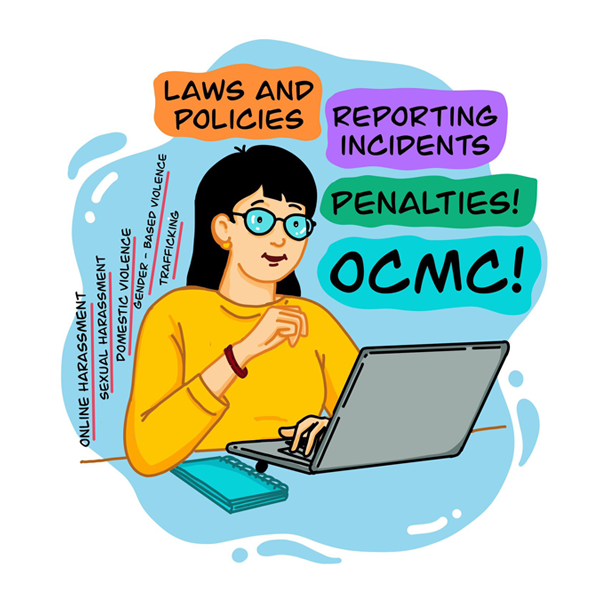Knowledge is power: A teen’s guide to safety in Nepal
Learn how to report violence or harassment. Find guidance on taking action, seeking help, and fostering a safer environment from the list below.
Section 1: Different types of Violence in Nepal
1.1 Domestic Violence
Domestic violence can take many different forms like emotional, physical, sexual, or financial. Due to sociocultural construction it’s experienced by women most but it’s important to know that men can face it too.
1.2 Gender-based Violence
One in three women may experience gender-based violence (GBV) at some point in their lives. That’s how big a problem it is. It is a global problem. GBV mostly refers to rape, mental torture, child marriage, physical and domestic abuse, and people trafficking. This issue stems from socio-cultural beliefs and practices. It must change for the healthy social development of all human beings.
1.3 Sexual Harassment
Sexual harassment is commonly occurs in our societies. There are laws against it, like the Sexual Harassment Act. It can happen at the workplace, in schools, or even in public places and anywhere.
1.4 Trafficking
Trafficking is a big problem in Nepal. Women, girls and even man are abducted or tricked into leaving their homes for far-off regions or countries for forced labour, sex work, organ transplant and others.
1.5 Violence arising from Traditional Practices
Forced or child marriages, dowry-related violence, male preference, and honour killings are examples of violence rooted in old traditions. These practices continue to harm not only women’s but also social development.
1.6 Online Harassment
There are also modern problems like online harassment and cyberbullying. In order to deal with them, one must understand the various forms they can take such as stalking, trolling, etc..
1.7 Other forms of Harassment
Young people should also be aware of street harassment, workplace harassment, and discrimination based on caste, ethnicity, religion, sexual orientation, body image.
Section 2: Legal Measures in Nepal
2.1 Laws and Policies
Nepal has laws like the Sexual Harassment Act, Domestic Violence Act, cybercrime law, that deal with violence and harassment. There are easy ways for people to report issues and bring those who do harm to book.
2.2 Reporting Incidents
If you ever need to report violence or harassment in Nepal, call the National Women Commission helpline at 1145, contact local police by dialing 100, child helpline 1098 or get in touch with organizations like Saathi, WoREC, CWIN etc.
2.3 Penalties
The punishments for committing violence or harassment include fines, imprisonment or both. The severity depends on what exactly happened. It’s important for young people to know about these legal consequences.
Section 3: How to Report Violence
3.1 Reporting Procedure
If you need to report something, you can directly contact helplines like 1145 or the local police at 100 or child helpline 1098. Adolescents can file written and oral complaints. Giving detailed information is important for the investigation to be effective.
3.2 OCMCs (One-Stop Crisis Management Centres)
OCMCs are like support hubs for survivors. They provide medical care, psychosocial counselling, legal help, shelter and link to the police as per need. It’s good for young people to know about these resources in case they ever need help in a crisis.
Conclusion
Even though there have been important legal changes, violence and harassment – especially based on gender – are still major problems in Nepal. Adolescents have a crucial role in raising voices, being a good human, making society safer by staying informed, reporting incidents, and pushing for positive change.
















